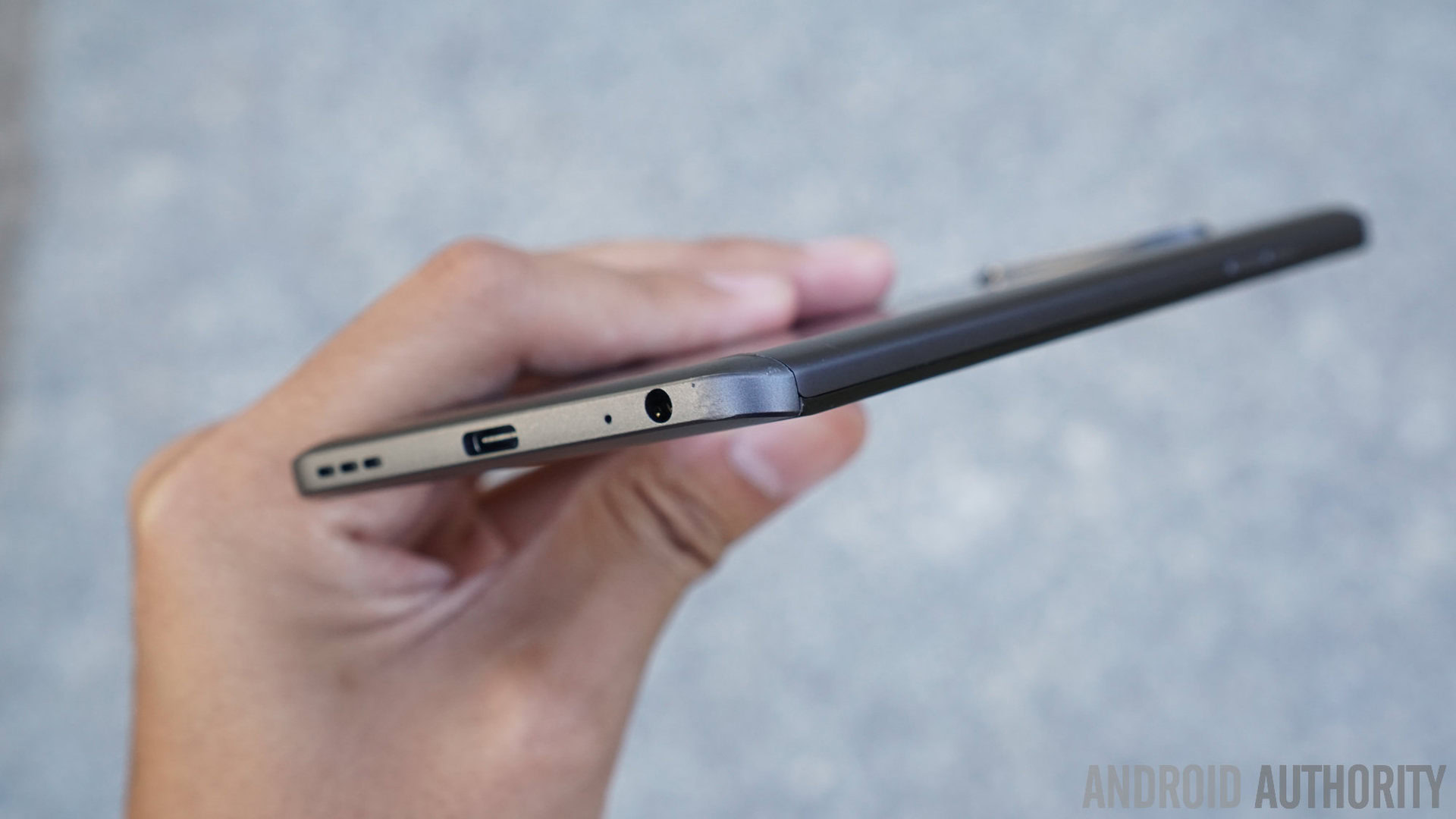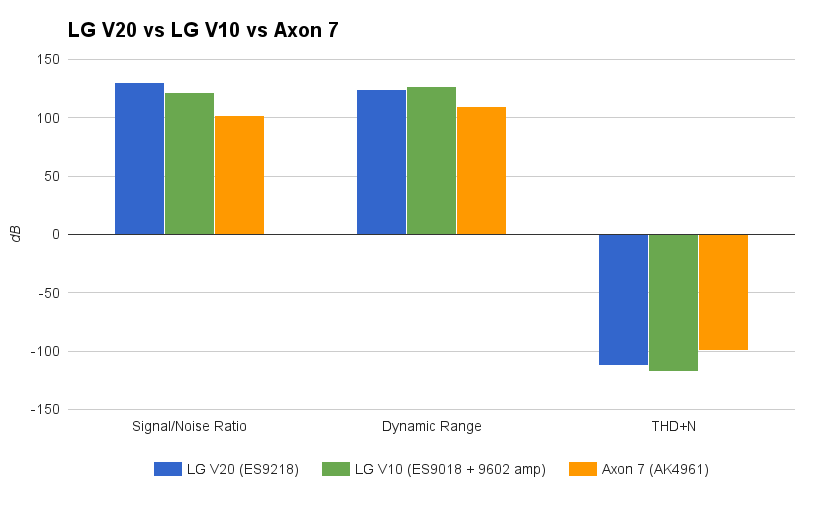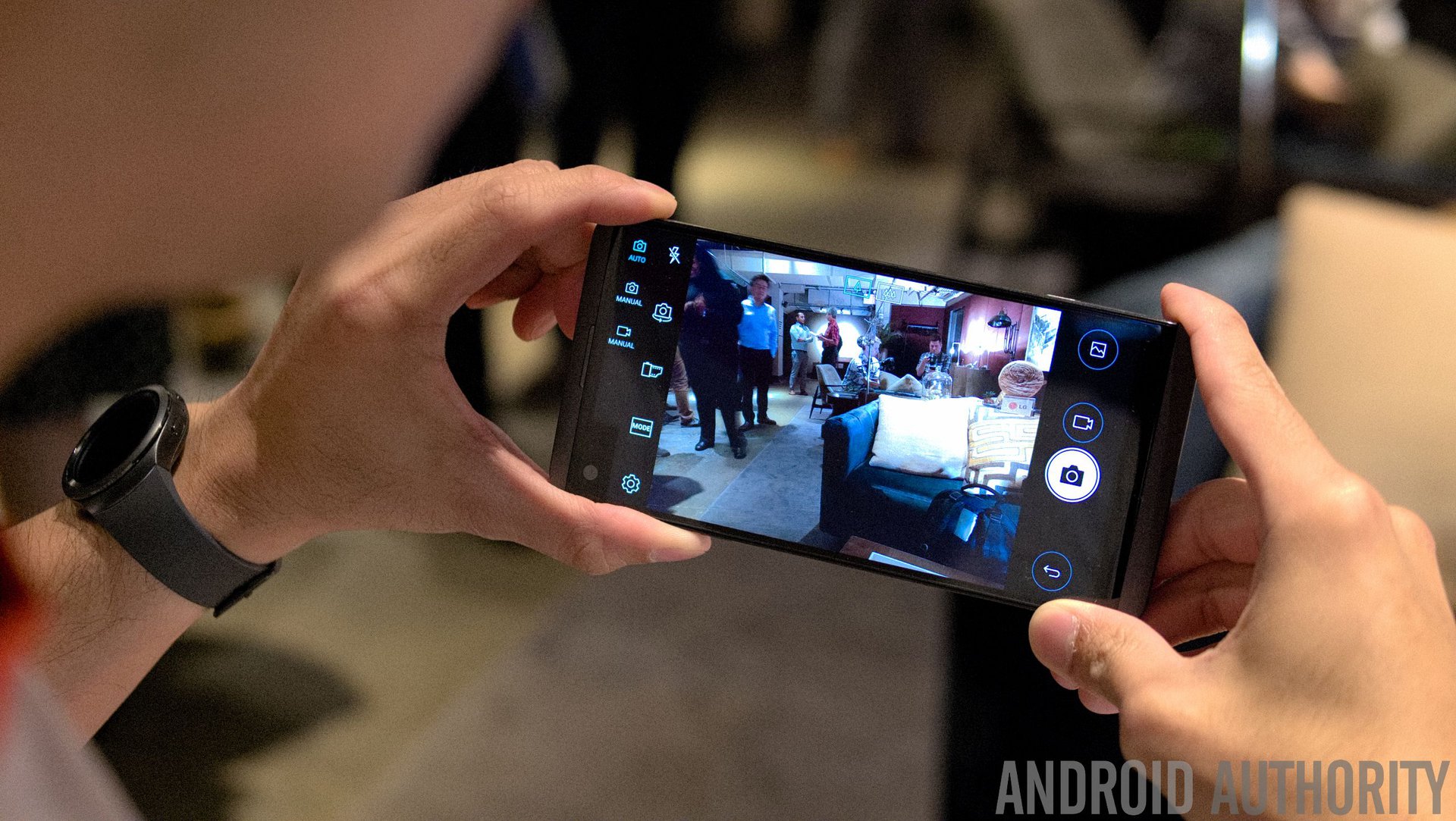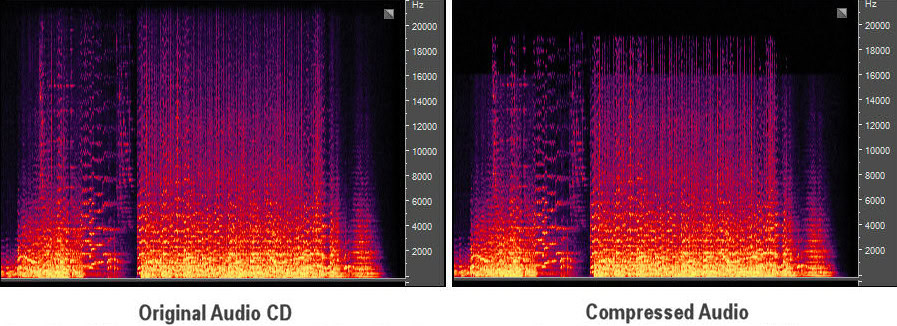Affiliate links on Android Authority may earn us a commission. Learn more.
A closer look at the LG V20's audio capabilities

The LG V20 is finally here and after much teasing about the handset’s audio capabilities, we finally have the official details. As well as boasting some top notch playback capabilities, LG has bundled in a selection of new recording features, both hardware and software, that will be a boon for mobile media creators and consumers.
As we suspected, the LG V20 features the latest ES9218 DAC from ESS, which features a parallel sub-DAC configuration to improve noise performance and total harmonic distortion. The chip boasts theoretical maximums of 130SNR, 124dB DNR and -112dB THD+N, although real world performance may not quite reach these numbers.
The chip also features a dedicated headphone amp with a high 2Vrms output, which should help to reduce the effects of signal loss with headphones of different impedance. There’s a 75 stage analog volume control and hardware left/right channel balancing controls too.
Is it better than the V10?
Compared with the quite superb sounding LV V10, the newer V20 DAC and amplifier’s paper specifications are a very close match. The V10’s ES9018 and 9602 amplifier combination offer an ever so slightly better dynamic range and lower distortion characteristics than the V20’s ES9218. However, the ES9218’s new Quad DAC design lends itself to a superior signal-to-noise ratio of 130dB versus 122dB. We should also note that the smartphones’ circuit design and signal path will lower these theoretical maximum results, and in reality the two are likely to be incredibly close.

According to LG, using DAC’s in parallel inside the V20 decreases noise by by a value of “1 divided by the square root of 4” per channel. LG says this improves noise performance by 50 percent (6dB reduction in noise voltage), so we are likely looking at two parallel DACs per stereo channel, giving us a total of four.
Along with the lower noise performance of the ES9218 DAC, LG has implemented some special metal shielding over the DAC chip to help reduce noise interference from the internal processor and radio frequencies, which should help to preserve signal integrity. Clearly, a lot of attention has been paid to the audio circuit design to ensure a listening experience that will please picky audiophiles.
LG says that the V20 supports audio file formats with up to a 32-bit depth and 384kHz sample rates, or those in the DSD512 format. In reality, you won’t find very many files that match these huge formats, plus it would be complete overkill. However, the LG V20 won’t have any problems playing back lossless 24-bit FLAC or ALAC files and streaming CD quality music from services such as TIDAL and Qobuz.
The LG V20 supports audio through both the 3.5mm jack and over the phone’s USB Type-C connection. However, the Quad DAC is only used for the 3.5mm connection and the phone’s speakers, as the USB Type-C connection or wireless equivalent only deals with digital data transmission to an external DAC or set of headphones. So, the sound quality of any USB Type-C or Bluetooth headphones will depend entirely on the quality of the DAC inside these separate accessories.

Improved recording capabilities
As well as improved playback capabilities, LG has packed in some new recording functionality and software that also aims to improve quality.
There are not two, but three High Acoustic Overload Point microphones inside to help prevent those terribly distorted sounding recordings that you typically end up with when recording in a concert or sporting event. LG says that the V20 can now handle deafening inputs up to 132dB, up from an already huge 120dB with the LG V10. The added benefit of using three mics is that this will also allow for pin point location recording.
The LG V20 features an HD Audio Recorder, that can output 24-bit/192kHz FLAC files. LG claims that this is capable of matching studio quality recordings, thanks to the use of a background noise filter, and a limiter to pick out sounds at a set recording distance. On the software side, there’s a dedicated “Studio Mode” with a range of configurable options for music and instrumental recordings. LG has even thrown in a Music Recorder option that captures singing voices recorded over existing music. That said, I’m not sure that the handset going to offer performance that matches the best studio equipment, but it should be a step up for smartphone audio recording.
LG also offers lossless LPCM (24-bit, 48kHz) audio recording output for video, which matches the format used by professional camcorders. Again, making full use of this format depends on the quality of the recording hardware, but it’s certainly a nice option to have.

Along with a new DAC and audio recording features, LG has once again teamed up with Bang & Olufsen to help fine tune the audio experience. There aren’t any modular components this time around, instead it appears that B&O have been helping out with the circuit and speaker design. However, this partnership was only taken up by LG’s Asian regional office. All other regions will receive a listening experience tuned by LG’s own engineers. Unfortunately we don’t know what, if any, effect this will have on audio quality.
Just like its last generation V10, LG has paid particular attention to the audio features of its new V20 smartphone, and that should help separate it from the competition. Whether you’re looking for the best phone to play back your lossless audio collection on or planning to capture videos with the dual-rear camera setup, the LG V20 aims to have you completely covered on the audio front.